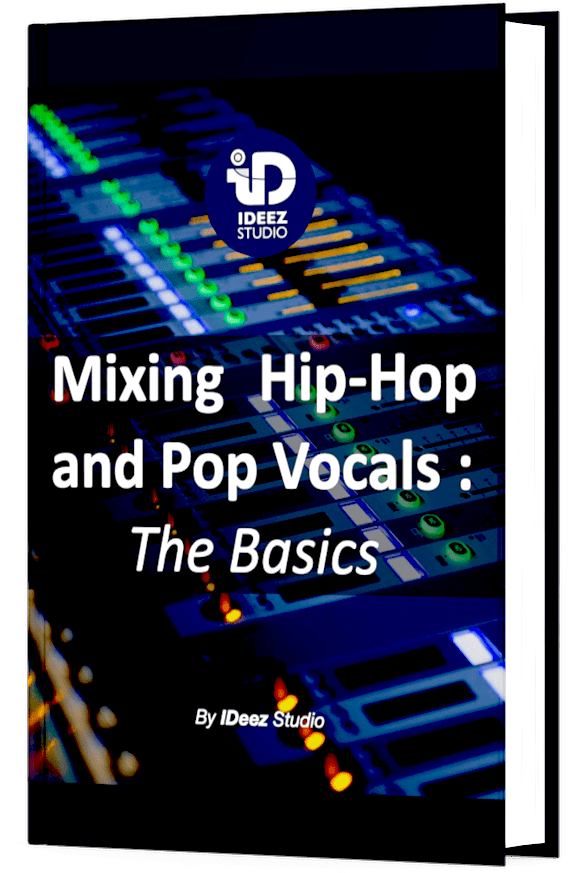In the field of music production, pitch shifting is a tool that is very often used both by professionals and amateurs. Whether for creative, corrective or technical purposes, pitch shifting plugins have a major place in music production. But what are the best pitch shifting plugins these days?

Top 6 Pitch Shifting Plugins For Vocals In 2024:
- Slate Digital MetaPitch
- Soundtoys Little AlterBoy
- Infected Mushroom Manipulator
- Waves Vocal Bender
- Kilohearts Pitch Shifter
- Waves SoundShifter
What is a pitch shifting plugin?
Before we dive into this top 6, it is essential to know what exactly is a pitch shifting plugin. If you’re not 100% sure what it is, I suggest you take the time to read this short chapter. It will help you approach this article in the right way!
A pitch-shifting plugin is a digital audio processing tool used in music production to alter the pitch of audio signals without (significantly) changing their timing.
It operates by modifying the frequency content of the input audio, allowing users to shift the pitch higher or lower while maintaining the original duration of the sound. This technology is used for various purposes. It ranges from correcting out-of-tune vocals to creating unique and creative musical effects.
Pitch-shifting plugins are typically integrated into digital audio workstations (DAWs) or used as standalone software. There are also many hardware versions (which we won’t go into here).
This type of plugin generally offers an interface where users can control parameters such as pitch shift amount, formant preservation, and, sometimes, time-stretching. Nowadays, transparent and artifact-free pitch shifting is a hallmark of high-quality plugins.
In addition to corrective applications, pitch-shifting plugins are widely utilized for creative purposes. With various algorithms and customization options, these plugins have become an essential tool for sound engineers, artists and music producers.

Important features of a pitch shifting plugin
To choose the pitch-shifting plugin that fits your needs, it is important to know the key features of this type of plugin. Here are the main ones.
1. Sound quality
Naturally, the most essential aspect of a pitch shifting plugin is ultimately the quality of the sound it produces. The plugin should ideally maintain the integrity of the original sound without introducing unwanted artifacts, such as glitches, aliasing, or unnatural tones.
2. Pitch range
A good pitch-shifting plugin must also be able to cover a wide shifting range. The wider the range, the greater the creative and technical possibilities. This includes both upward and downward pitch-shifting capabilities.
3. Time-stretching
A pitch-shifting plugin will open ever more creative doors if it allows users to play with time-stretching without modifying the pitch, while maintaining top-notch audio quality. This is especially useful when working with different tempos or trying to sync audio with specific timings.

4. Formant preservation
Preserving the formant of vocals when modifying pitch is a great asset for a pitch-shifting plugin, as it allows you to move the pitch without creating a robotic tone within the voice.
5. Interface
The User Interface (UI) is also an essential element in the user’s workflow. A good interface is often the sign of a very good plugin. And it also means you can work faster and more efficiently.
6. MIDI integration
MIDI integration enables users to control pitch and formant parameters using external MIDI controllers, enhancing performance and creativity.
7. CPU efficiency
Efficient use of system resources is important to ensure that the plugin can be used in complex projects without causing significant CPU strain. Optimizations for performance are crucial for a smooth workflow!
8. Features and versatility
A good pitch-shifting plugin needs to have features that will boost the efficiency and creative possibilities. A pitch-shifting plugin that has a lot of features is generally more versatile than its competitors, as it will allow the users to use it on many different audio sources.

1. Slate Digital MetaPitch

Today, Slate Digital is one of the most reliable plugin builders in the world. Their products are always professional-quality, bug-free and their interfaces always allow you to work efficiently and instinctively.
This is exactly what describes MetaPitch, the most recent plugin on this list. Through its modern, intuitive interface, MetaPitch offers its users impressive sound quality and a wealth of creative possibilities.
Looking for a professional sound engineer specializing in pop and hip-hop music ? You’re in the right place! Mixing, mastering, production, editing,… we’ve got it all covered!
Let’s start now!
MetaPitch can be used in two modes. Either the classic “shift” mode, which lets you play with the pitch and formant of the source in real time. Or the robot mode, which lets you target a specific note in the correction.
It also features widener parameters, a low- and high-cut filter, and a drive and mix knob to boost artistic and creative possibilities.
Finally, MetaPitch has a feature that lets you group several tracks together to modify their parameters simultaneously. Very convenient!
✅ PROS ✅
✅ Impressive sound quality
✅ Formant remains constant when pitch is changed
✅ Very easy to use
✅ Modern and intuitive interface
✅ Modern and intuitive interface
✅ Grouping system
❌ CONS ❌
❌ High CPU usage
2. Soundtoys Little AlterBoy

This Little AlterBoy can be seen as the “father” of all the plugins inside this list. Soundtoys, renowned for its innovative and creative audio processing tools, were the first ones to create a plugin that stand out for its ability to transform vocal and instrument recordings with a range of unique effects.
It features a user-friendly interface that allows for intuitive control over parameters, making it accessible for both beginners and professionals.

Like MetaPitch, Little AlterBoy has a “normal” mode (Transpose) and a Robot mode, which is quite the same as MetaPitch. But it also has a Quantize mode that tune the vocals (or any other monophonic signals) to the closest chromatic semi-tones.
Additionally, the plugin provides a blend of creative effects like tube saturation, pitch modulation, and throat modeling, offering a palette of sonic possibilities.
With its unique simplicity and sobriety, Little AlterBoy is a luxury choice in modern music production. But isn’t it getting old around all these new competitors? A Soundtoys update wouldn’t hurt!
✅ PROS ✅
✅ Very instinctive
✅ Sober interface
✅ Pro sound quality
❌ CONS ❌
❌ Lack of advanced parameters
❌ Works well only on vocals
3. Infected Mushroom Manipulator

Manipulator is probably the most special plugin on this list. And not for nothing: the duo behind Infected Mushroom are renowned for their out-of-the-ordinary plug-ins.
Comprehensive and packed with unique parameters, Manipulator is a real creativity bomb. It has parameters that none of its competitors have. And above all, it’s one of the only plug-ins with MIDI integration.

Manipulator also features a sequencer and an ADSR curve modifier. As you can see, Infected Mushroom’s plugin allows you to completely transform the audio source being processed. Be it vocals or any other instrument!
This plugin is in fact much more than a simple Pitch Shifter. It’s an advanced tool offering parameters that can modify pitch, formant, stereo, dynamics, harmonic richness and many other aspects of the audio signal. The power of this plugin is impressive.
But be warned, this plugin isn’t the easiest to use and… it’s a bit expensive!
✅ PROS ✅
✅ Endless creative possibilities
✅ Very complete plugin
✅ Goes further than just pitch and formant shifting
✅ MIDI integration
❌ CONS ❌
❌ Expensive
❌ Not easy to use
4. Waves Vocal Bender

Vocal Bender is a pitch- and formant-shifting plugin that looks simplistic but can work wonders in terms of creativity. At first glance, it has very few parameters and might therefore seem limited. But believe me, that’s far from the case!
Because the Waves plugin has an advanced mode that allows you to play with many different parameters and achieve results that only Vocal Bender can create. You can, for example, make pitch and formant sequences within the plugin itself, or modulate every parameter of the plugin easily and instinctively.

With its high audio quality, Vocal Bender is probably the pitch-shifting plugin that will appeal most to the amateur community. Firstly, because it’s so easy to use, and secondly because it works so smoothly in real time. This allows users to try out many things without having to record vocals first.
Whether you want to make unique harmonies, add original backing vocals or create chopped-and-screwed sequences to your tracks, Vocal Bender can open creative doors you’ve never even imagined!
✅ PROS ✅
✅ Very instinctive
✅ Uniques parameters and modulation tools
✅ High audio quality
✅ Works very smoothly in real-time
✅ Lots of quality presets
❌ CONS ❌
❌ Actually, I don’t really see any!
5. Kilohearts Pitch Shifter

And here’s the big outsider on this list: Kilohearts Pitch Shifter. Admittedly, this plugin might seem very (too) simplistic, or even like a plugin built exclusively for amateurs.
But when you hear the pitch-shifting sound quality, you’ll quickly realize that behind its “cheap” appearance lies a plugin that has nothing to envy all its competitors.
With Pitch Shifter, you certainly don’t have all the creative possibilities you might have with Manipulator or Vocal Bender, but if your sole aim is to modify the pitch of your vocals while maintaining good sound quality, then this plugin from Kilohearts is perfect for you.
Looking for a professional sound engineer specializing in pop and hip-hop music ? You’re in the right place! Mixing, mastering, production, editing,… we’ve got it all covered!
Let’s start now!
Important detail: Pitch Shifter is the only plugin on this list covering 4 octaves (2 down and 2 up). It also has two unique parameters, Grain Size and Jitter, which can completely change the rendering of the pitch shifter, so you can (still) get a touch of creativity in your productions.
What’s more, Kilohearts plugins have the great advantage of consuming very little CPU. If you have heavy production or mixing sessions, these plugins are definitely worth exploring!
✅ PROS ✅
✅ Super instinctive
✅ Very good audio quality
✅ Straightforward interface for better workflow
✅ Uniques features (Jitter, Grain Size, Correlate)
✅ Low CPU usage
❌ CONS ❌
❌ Lack of advanced features
❌ Not the best plugin for more creativity in your productions
6. Waves SoundShifter

And here’s another pitch shifting plugin from Waves: SoundShifter! But this time, quite different from Vocal Bender. As much in the interface and audio rendering as in the way it works. Here, the workflow will be quite different from all other competing plugins.
Soundshifter is probably the plugin on this list that opens the fewest creative doors, sporting a sober, simplistic interface far from the more “crazy” style of Manipulator or MetaPitch.

But like Kilohearts’ Pitch Shifter, if you want to do more “technical”, less creative pitch shifting, SoundShifter is the plugin you’ll need, as the quality and precision of the pitch shifting is quite incredible.
The big advantage of SoundShifter is that it can adapt to any type of source, thanks to the 4 different modes offered by the plugin.
- “Sync: To prioritize the maintenance of phase and timing (with lower audio quality).
- “Smooth”: Ideal for monophonic melodic instruments (voice, trumpet, flute,…)
- “Transient”: To preserve transients (ideal for guitars or pianos)
- “Punchy”: Mode that preserves the attack of the treated instrument (ideal for percussion)
If you need to pitch an element of your mix while preserving as much of its nature and sonic signature as possible, SoundShifter will satisfy you more than you think!
Note: If you also want to play with the timing and speed of processed audio, try Parametric SoundShifter! And if you want to easily automate pitch, Graphic SoundShifter is for you!
✅ PROS ✅
✅ Very accurate processing
✅ 4 modes to fit the type of audio you’re processing
✅ Very intuitive
❌ CONS ❌
❌ Not the most creative plugin
❌ Very few advanced features
The different ways to use Pitch shifting
Technical correction
As you can read in this article, some plugins are better suited to more creative choices (like manipulator), and others to more technical, corrective choices.
In music production, pitch correction can very often take place during the editing phase. A badly sung note, a change of decision on a very specific note of an instrument, an out-of-tune bass… Many things can require the use of “corrective” pitch-shifting.
But be careful not to overcorrect! Music will always retain its natural beauty through the little flaws that remain in a track. A song that is too perfect is not necessarily more enjoyable.

Creating harmonies
In a song, the principle of harmony always adds another dimension to an arrangement. As a reminder, harmonizing is the musical technique of creating simultaneous, complementary melodies or chords that enhance and support the primary melody, resulting in a rich and harmonically pleasing sound.
The pitch-shifting plugin can be a great help when you’re short of ideas. It can open doors you might not have thought of initially. A good balance between a main melody and its harmonies can give a song a whole new direction.
Building unique sounds
A pitch shifting plugin is also an excellent tool for creating unique textures within a mix/production. Indeed, by modifying the pitch of an audio source (and potentially its formant or other parameters), the sonic signature can be completely transformed.
This opens up an unimaginable number of doors! Whether you’re playing percussion or melodic instruments, the only limit is your own creativity!
Enhancing transitions
Whatever musical genre you’re working in, transitions are an essential element in giving depth to a song’s arrangement. Or to highlight certain sections of the song, such as a chorus, for example.
In this kind of situation, pitch ups and downs can be very effective in boosting transitions and therefore the impact of a section.

Creating chopped-and-screwed sections (rap music)
Chopped-and-screwed is a production technique that originated in Houston hip-hop in the 90s. Initially, this technique consisted of reducing the tape playback speed to create a deeper vocal effect on very fat percussion with a long decay.
It’s a technique that has retained its superb appeal over the years, thanks to rappers such as Asap Rocky and Chamillionaire. Using chopped-and-screwed in your productions can add a unique touch to the track you’re working on.
Conclusion
Pitch-shifting plugins can be incredibly powerful when it comes to being creative in the music production process. To a lesser extent, they can also be used to correct pitch errors during recording or editing.
Each plugin is more or less adapted to one situation or another. When choosing a plugin, it’s up to you to judge which one best suits your needs in terms of parameter complexity, interface, features, ease of use or audio quality.
When it comes to pitch shifting, never hesitate to try unusual things and sometimes create the happy mistake to get the job done! The creative possibilities of a simple pitch change are impressive, it’s up to you to use them wisely!
If you have any questions about pitch-shifting plugins or about anything in the field of music production, contact me and I’ll be happy to answer all your questions.
Related Articles:
My favorite tools for mixing pop and hip-hop music:
Plugins
In the field of auto-tune, I’m convinced that nothing’s better and more efficient than Antares Auto-Tune Pro. As for the EQ’s, FabFilter Pro-Q3 and Slate Digital Infinity EQ are, in my opinion, the best tools. For compression, I have 2 favorites plugins: Waves RComp and UAD EL8 Distressor.
As for reverb, I’m a big fan of the Soundtoys Little Plate, but generally, I go for the Valhalla VintageVerb for its versatility. I also love the Arturia Rev PLATE-140 and the UAD Pure Plate for its organic side.
Headphones
The closed headphones I love and will always love using for mixing pop and hip-hop music are the Beyerdynamic DT-770. As for the best open-back headphones, I use the Sennheiser HD600 headphones, and I’m really happy of them!
Monitors
Having a pair of Yamaha HS7 in its studio or home studio is always cool for more excitement while listening to your mixes. The Adam Audio T7V monitors are also super accurate. In my studio, I also have a pair of Genelec 8030 for their reliability.
Hardware gear
For anyone who wants to start using hardware in their mixes, I always recommend these 2 units from Klark Teknik: the EQP-KT and the 76-KT. Don’t forget to use good converters, such as the Apollo interfaces. This is essential for a good rendering.






